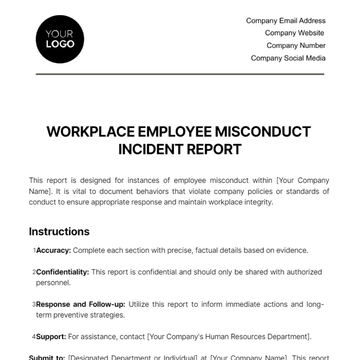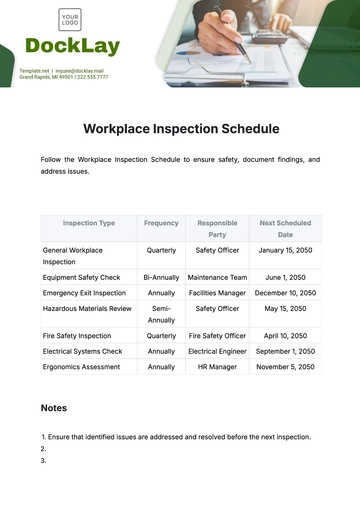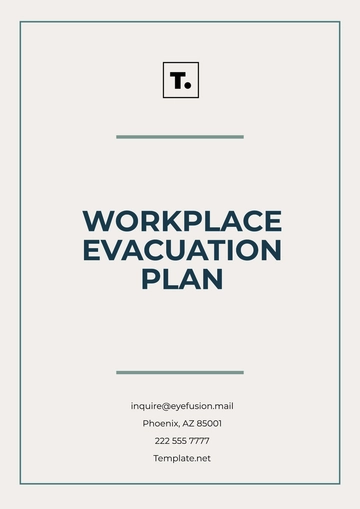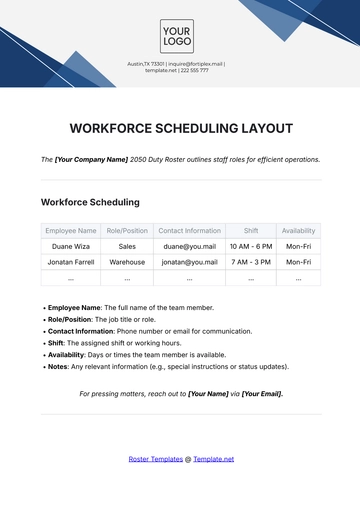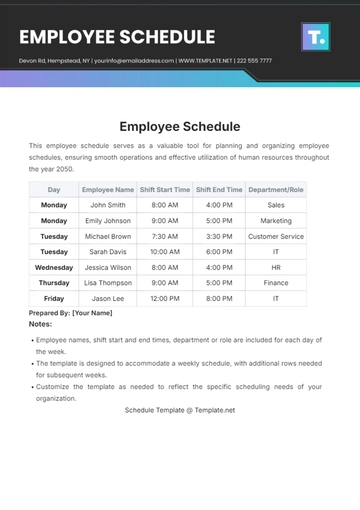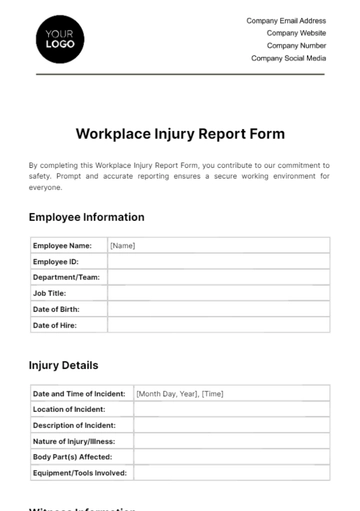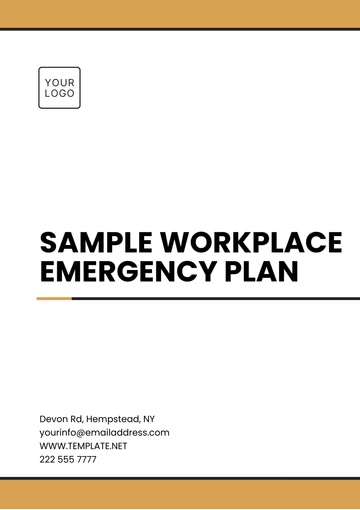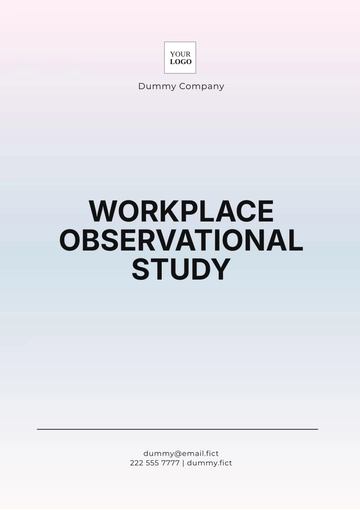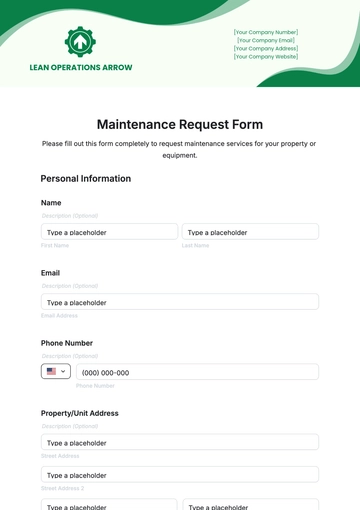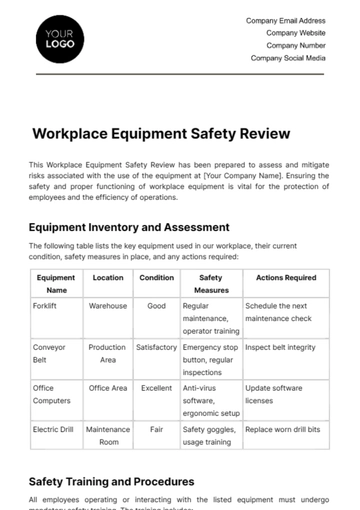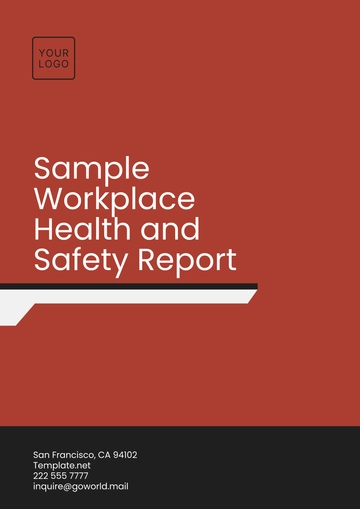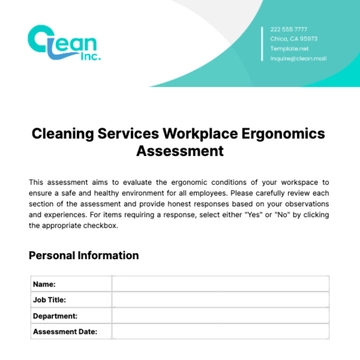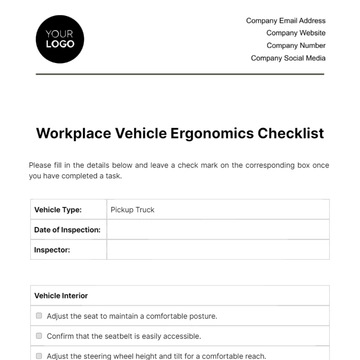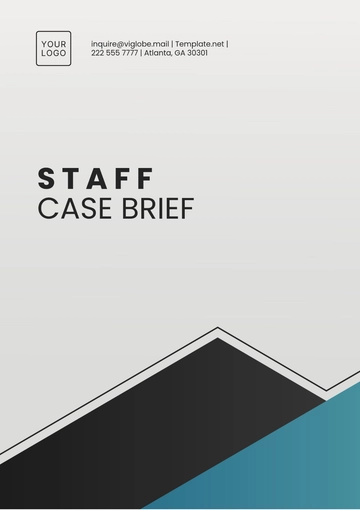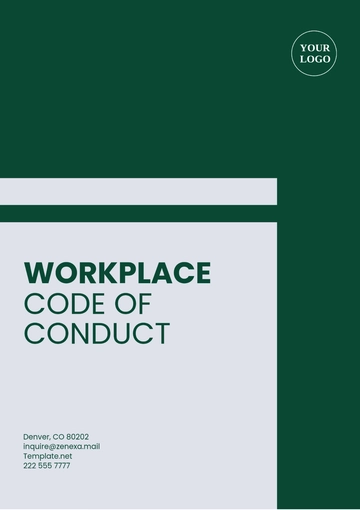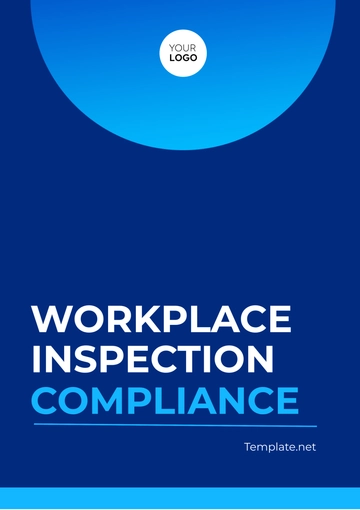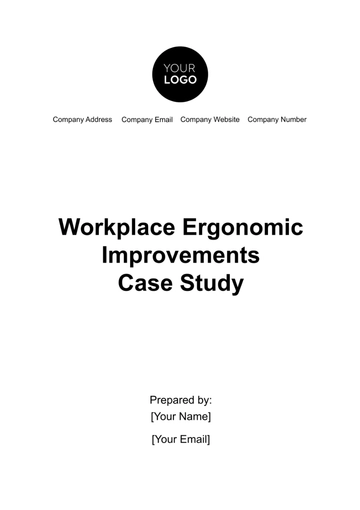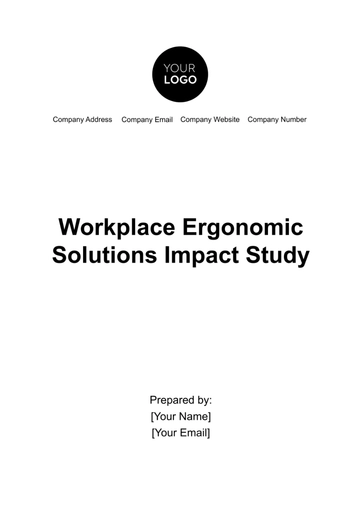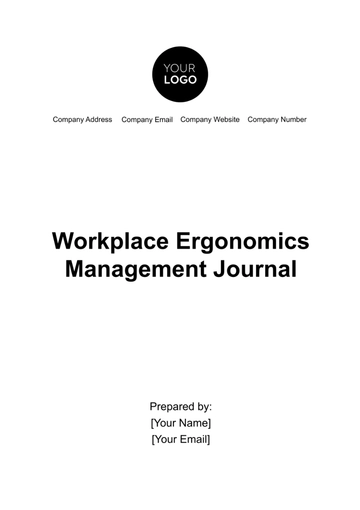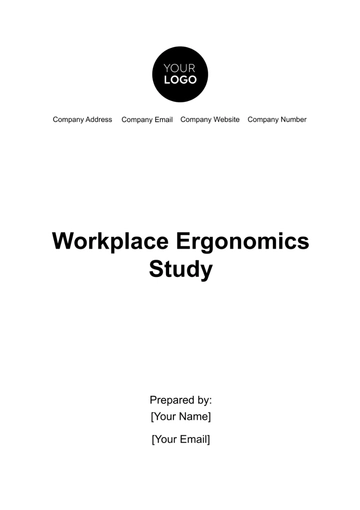Free Workplace Incident Response Protocol
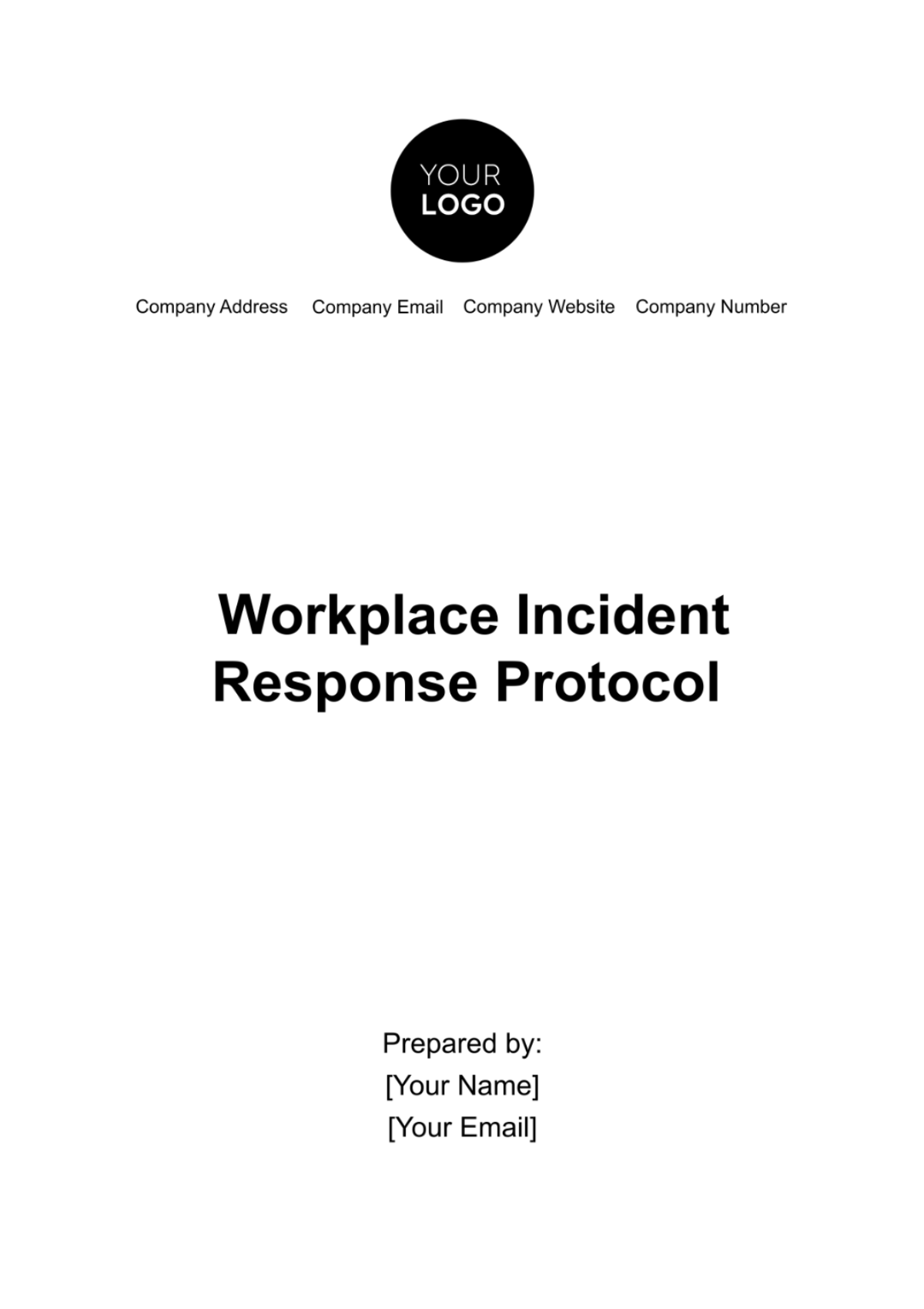
I. Introduction
This Workplace Incident Response Protocol, is a document formulated by [Your Company Name] to address a wide range of incidents that may arise within the workplace. The primary objective of this Protocol is to outline a structured and systematic approach to managing incidents, ensuring a swift, effective, and coordinated response. The necessity of such a Protocol is underscored by our commitment to uphold the highest standards of safety, security, and wellbeing for all employees, contractors, and visitors at our premises.
Through this document, [Your Company Name] demonstrates its unwavering dedication to creating and maintaining a workplace environment that prioritizes safety, encourages prompt reporting of incidents, and supports continuous improvement in incident management practices. Our ultimate goal is to ensure that every individual associated with [Your Company Name] feels safe, valued, and protected, thereby fostering a positive and productive work environment.
II. Scope
The scope of this protocol extends across the entirety of [Your Company Name]'s operations, encompassing all individuals within the organizational environment and all types of incidents that could impact workplace safety and security. This includes all employees, irrespective of their rank or position, contractors, temporary staff, and visitors to any of [Your Company Name]'s facilities or locations. The inclusivity of this scope ensures that the Protocol is applicable in a wide array of situations, providing a consistent and standardized approach to incident management.
This Protocol addresses a broad spectrum of incidents, ensuring preparedness for various scenarios that could potentially disrupt the workplace environment. Incidents covered under this Protocol include, but are not limited to:
Accidents and Injuries: Any physical harm occurring within the workplace, whether minor or severe.
Safety Hazards: Situations or conditions posing risks to health and safety, including environmental hazards.
Security Breaches: Unauthorized access, data theft, or any compromise of physical or informational security.
Misconduct: Behaviors or actions by individuals that violate workplace policies or ethical standards, including harassment and discrimination.
By clearly delineating the scope, this Protocol also serves as a guideline for all stakeholders, making them aware of their roles and responsibilities in maintaining a secure and harmonious work environment.
III. Definitions
1. Incident
An incident is defined as any unplanned or unexpected event that negatively impacts the safety, security, or integrity of the workplace environment or its members. This encompasses a wide range of occurrences from physical accidents and health emergencies to security breaches and ethical misconduct. Incidents can vary significantly in scale and severity, ranging from minor issues that can be quickly resolved to major crises that may require extensive intervention.
2. Response Team
The Response Team is a designated group of individuals who are responsible for managing and responding to incidents reported within [Your Company Name]. This team is carefully selected and trained to handle a variety of situations, ensuring a swift and effective response. The Response Team is responsible for the initial assessment of the incident, coordinating the response efforts, overseeing the investigation process, and implementing corrective measures.
3. Stakeholders
Stakeholders include any individuals or groups who are directly or indirectly affected by the occurrence or involved in the response and management process. This broad category includes employees who may be victims or witnesses of an incident, their family members, the management team, shareholders, and external entities such as emergency services, law enforcement, and regulatory bodies. The needs and perspectives of different stakeholders are taken into consideration during the incident response and management process.
IV. Incident Response Team
This team is composed of key personnel who are trained and prepared to manage various types of incidents within the workplace. Each member of the team plays a specific role, contributing their expertise and skills to ensure an efficient and effective response to incidents. The composition of the team reflects the diverse aspects of incident management, ranging from immediate safety measures to legal compliance and internal and external communications.
Team Composition and Responsibilities:
Role | Name | Contact Number | Responsibilities |
Team Leader | [Name] | [Number] | The Team Leader oversees the overall incident response process, ensuring that all team members perform their duties effectively. |
Safety Officer | [Name] | [Number] | The Safety Officer is in charge of assessing and managing the immediate safety risks associated with the incident. |
HR Representative | [Name] | [Number] | The HR Representative addresses the human elements of the incident. They also assist in managing the impact on workplace relations and morale. |
Legal Advisor | [Name] | [Number] | The Legal Advisor provides guidance on legal matters related to the incident. |
Each member of the Incident Response Team has a specific set of skills and responsibilities that are crucial for handling workplace incidents. Their combined efforts ensure that any incident at [Your Company Name] is managed with the highest level of professionalism and efficiency, minimizing impact and facilitating a quick return to normal operations.
V. Incident Reporting Procedure
The Incident Reporting Procedure outlines the process for reporting incidents, ensuring that they are promptly and effectively communicated to the Incident Response Team. This procedure is designed to be straightforward and accessible to all employees, contractors, and visitors, enabling immediate action in the event of an incident.
Detailed Steps and Reporting Methods
Identification of Incident
Any employee, contractor, or visitor who observes or is involved in an incident is required to immediately identify it as a potential concern. This includes any situation that poses a risk to safety, security, or any form of misconduct within the workplace.
Initial Reporting
The individual who identifies the incident should, without delay, report it to the Incident Response Team. Immediate reporting is crucial to ensure prompt action and to mitigate any potential harm or escalation of the situation.
Methods of Reporting
Multiple reporting channels are provided to ensure accessibility and convenience. These include:
Reporting Method | Details |
Phone | Incidents can be reported by calling [Your Company Number]. This line is monitored continuously to ensure timely response. |
Reports can be sent to [Your Company Email], which is regularly checked by the Incident Response Team. | |
Online Reporting System | An internal reporting system is available on [Your Company Website], allowing for detailed reporting and documentation of the incident. |
Anonymity and Confidentiality
The reporting procedure allows for anonymity to encourage reporting of sensitive incidents. Confidentiality of the reporter and the details of the incident will be maintained, in accordance with company policies and legal requirements.
Follow-Up
Once an incident is reported, the Incident Response Team will initiate the assessment process and follow the subsequent steps outlined in the Protocol.
This comprehensive and accessible reporting procedure ensures that all incidents at [Your Company Name] are reported in a timely and effective manner, facilitating immediate action and contributing to the overall safety and security of the workplace.
VI. Incident Assessment
The Incident Assessment phase ensures a methodical and effective approach to handling workplace incidents. This phase involves a structured process undertaken by the Incident Response Team to evaluate and classify the incident, which is essential for determining the appropriate response strategy.
1. Initial Assessment
Conducting the Assessment: Upon receiving a report of an incident, the Incident Response Team promptly conducts an initial assessment. This step is crucial to understand the scope and implications of the incident.
Determining Severity and Impact: The team evaluates the severity of the incident, considering factors like potential or actual harm to individuals, impact on company operations, and any legal or regulatory implications.
Immediate Needs: The assessment also identifies any immediate actions required to safeguard individuals and secure the workplace environment.
2. Classification of Incident
Categorization: Based on the initial assessment, incidents are classified into categories such as minor, moderate, or severe. This classification is based on criteria like the extent of harm or potential harm, the number of people affected, and the level of disruption to operations.
Severity Levels:
Minor: Incidents with no or minimal injury and low impact on operations.
Moderate: Incidents with moderate injuries or moderate impact on operations.
Severe: Incidents involving serious injuries, major legal implications, or significant impact on business operations.
Response Strategy: The classification guides the Incident Response Team in determining the necessary response measures and resources required.
The Incident Assessment process ensures that each incident is addressed appropriately, with actions tailored to the specific nature and severity of the incident.
VII. Incident Response
Incident Response phase is a critical component of [Your Company Name]'s Workplace Incident Response Protocol, outlining the immediate and subsequent actions to be taken following an incident. This phase is crucial in addressing the incident effectively, mitigating any potential harm, and preventing future occurrences.
Immediate Actions
Activation of Emergency Procedures: In the event of an incident, immediate actions are crucial. These may include the activation of emergency procedures like evacuation, especially in cases of fire, hazardous material spills, or security threats.
Provision of First Aid: Where injuries are involved, providing first aid and medical attention is a priority to ensure the well-being of affected individuals.
Notification of Emergency Services: For severe incidents, emergency services such as ambulance, fire brigade, or police may need to be notified promptly to ensure expert handling of the situation.
Investigation
Determining Causes: A thorough investigation is conducted by the Incident Response Team or designated investigators to ascertain the causes and contributing factors of the incident. This step is essential for understanding how the incident occurred and for developing strategies to prevent similar incidents in the future.
Collection of Evidence: The investigation involves collecting evidence, interviewing witnesses, and examining the incident site to gather comprehensive information.
Remedial Actions
Implementing Corrective Measures: Based on the findings of the investigation, appropriate remedial actions are formulated and implemented. These actions are aimed at preventing the recurrence of similar incidents.
Policy and Procedure Updates: The remedial actions may include changes to existing policies and procedures, implementation of new safety measures, or additional training for employees.
By responding promptly and effectively to incidents, the company demonstrates its dedication to the well-being of its employees and the continuous improvement of its safety practices.
VIII. Post-Incident Review
This phase is dedicated to analyzing the entire incident management process, from the initial response to the remedial actions taken. The objective is to critically assess both the effectiveness of the response and the underlying causes of the incident, with the aim of enhancing future response strategies and preventing recurrence.
Analysis: The Response Team will analyze the incident and the effectiveness of the response.
Report: A report will be prepared detailing findings and recommendations.
Implementation: Recommendations will be implemented to improve future responses.
XI. Training and Awareness
This section underscores the importance of educating and informing all employees about the Protocol, their roles in incident management, and general workplace safety. Regular training programs are designed not only to familiarize staff with the procedures but also to equip them with the skills and knowledge necessary to effectively respond to incidents.
Training Programs: Regular training programs will be conducted to ensure that all employees are aware of the Protocol and their responsibilities.
Awareness Campaigns: Regular awareness campaigns will be organized to promote a culture of safety and security.
X. Record Keeping and Documentation
This process involves maintaining detailed incident logs that capture the specifics of each event, including its nature, response actions, and outcomes. Periodic reviews of these incident logs enable the identification of patterns or trends, which are instrumental in proactive risk management and in shaping strategies to prevent future incidents.
Incident Logs: All incidents will be logged and documented.
Review: Incident logs will be reviewed periodically to identify patterns or trends.
XI. Review and Amendments
Recognizing that workplace environments, legal requirements, and best practices are continually evolving, this Protocol is subject to an annual review. During this process, the Incident Response Team, along with relevant stakeholders, critically evaluates the Protocol's effectiveness, relevance, and alignment with current regulatory standards and organizational needs. This review considers feedback from employees, lessons learned from past incidents, and emerging safety trends or risks.
Amendments, when necessary, are made to ensure that the Protocol not only meets the current demands of the workplace but is also proactive in its approach to future challenges and opportunities. This cycle of review and amendment is essential for [Your Company Name] to adapt and respond effectively to changing circumstances, thereby upholding the highest standards of workplace safety and incident management.
- 100% Customizable, free editor
- Access 1 Million+ Templates, photo’s & graphics
- Download or share as a template
- Click and replace photos, graphics, text, backgrounds
- Resize, crop, AI write & more
- Access advanced editor
Ensure workplace safety with Template.net's Workplace Incident Response Protocol Template. This editable and customizable resource, available through our Ai Editor Tool, provides a structured approach to managing incidents effectively. Empower your team to respond promptly and efficiently to emergencies, minimizing risks and ensuring a secure work environment with Template.net's innovative solutions.
